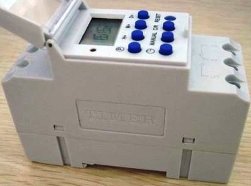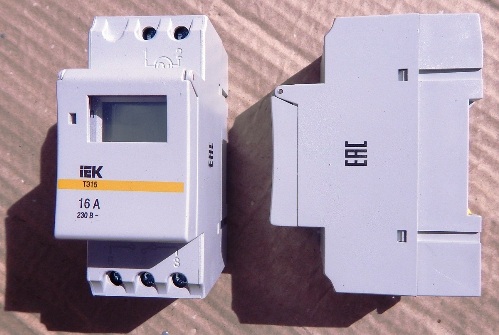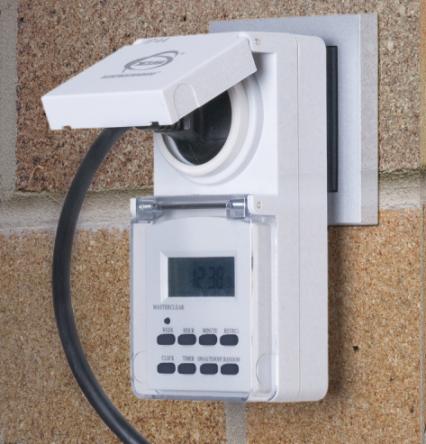Categories: Electrical Reviews
Number of views: 8342
Comments on the article: 0
Weekly electronic timer: brief description, functionality
 Recently, the implementation of the ideas of a smart home is in great demand. There are many different solutions that allow you to automate various processes, to make more convenient and efficient operation of household electrical appliances, both in the apartment and in a private house. One of these solutions, which can significantly simplify life, is the use of a weekly electronic timer, which will be discussed in this article.
Recently, the implementation of the ideas of a smart home is in great demand. There are many different solutions that allow you to automate various processes, to make more convenient and efficient operation of household electrical appliances, both in the apartment and in a private house. One of these solutions, which can significantly simplify life, is the use of a weekly electronic timer, which will be discussed in this article.
Weekly timer - brief description
Weekly electronic timer - a device designed to turn on and off the load (household appliances) at a specified time, with a set frequency. From the name of the device it follows that such a timer differs from the usual daily timer in that it can operate for several days, weeks.
You can set the desired settings for each day of the week individually. It is enough to configure once and the timer will work constantly, repeating the programs set by the user every week.
This device has a built-in battery that allows you to work without failures and save time settings and tuned programs in case of power outages.

Where can I use this device? The scope of the weekly timer is quite wide. The weekly timer successfully finds its application both in the apartment and in the private house. Using this device, you can turn on and off home appliances at a set time.
For example, you can set the inclusion an hour or two before arrival electric heaters the house will be warm at the right time. In this case, this is not only convenience, but also savings, since there is no need for a constant operation of the electric heating system.
With a long absence, you can set a specific time for which the heating will turn on, which will allow you to maintain a certain temperature in the room. In this case, the electronic timer will be an alternative to the use of automated heating control systems with temperature sensors. Similarly, you can control other household electrical appliances.
The ability to turn on and off the load at a given time for several days simplifies many different processes. For example, in a country house using a weekly timer, you can automatically turn on the irrigation system at a given time, on certain days of the week, which eliminates the need for a personal daily presence.
The same applies to feeding animals - if there is a need for the absence of residents for several days, you can implement the automatic supply of water and feed at certain intervals at a given time.
Unfortunately, in our time it is possible that with a long absence of residents, a house or apartment can be robbed. Therefore, another option for using a weekly electronic timer can be an imitation of presence, realized by periodically turning on the lighting and other electrical appliances, for example, a TV.

A few words about the functionality of weekly timers
If you need to purchase a weekly timer, the question arises as to which device to choose in order to realize the desired functions.
A weekly electronic timer can be performed as in the form of a socket, and in the form of a modular type device. Which option to choose? First of all, it is necessary to take into account the characteristics of each of the devices.
The timer-socket is a ready-made device, you do not need to make connections - just insert it into the desired socket and set the desired time for turning on the electrical appliances. This option is the easiest to implement, since it does not require the use of additional devices or performing work on connection. But this option is limited in power, as a rule, it is 3000-3500 W, since the device is designed to be connected to a normal household outlet, the permissible load of which does not exceed 16 A.
If it is necessary to implement an automatic voltage supply to the appliance, which is included in a regular household outlet, you can limit yourself to the use of a timer-outlet.
More related links:
Controlled sockets and switches ELRO
New Power Saver - OEL-820 Load Optimizer

The second option is a weekly electronic timer of a modular type, which is installed in an electrical switchboard on standard DIN rail. The contact system of this device is not designed for switching high currents - usually the rated current of the power contacts of the electronic timer is not more than 16 A. Despite the same power, the modular electronic timer has a wider functionality compared to the timer included in the socket.

The modular timer can be used in conjunction with contactor (magnetic starter)that allows you to significantly increase the switched power, as well as use a conventional modular timer to control both single-phase and three-phase loads. In this case, the load is switched by the contactor, and the timer provides only a control pulse, closing the control circuit of the contactor (magnetic starter).
Unlike the outlet version, a modular device can have several channels, that is, control several independent circuits. Thus, a single electronic timer can control several electrical appliances. The use of a modular device and contactors of the necessary configuration can realize any tasks for automating the operation of various devices and electrical appliances.
When considering the functionality of a particular type of weekly electronic timer, you should pay attention to the options of installed programs in the device. Usually, several ready-made programs are installed in the electronic timer, which greatly simplify the setup process.
See also at bgv.electricianexp.com
:
